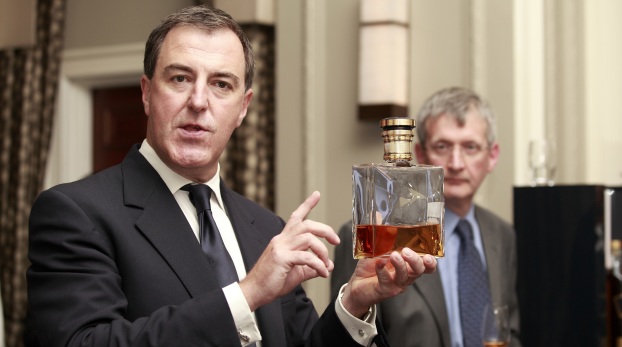We talked to Jonathan Driver - the Global Brand Ambassador for Johnnie Walker Blue Label and understand more about the market trend in Asia for premium whiskies.
What exactly does a Global Brand Ambassador do?
One of the main things a Brand Ambassador has to do is to be able to speak to the people who bought into your product. In the old days you get a figure head or spokesman but today you need to be able to spread and hold an open dialogue with the consumer and answer their questions. For example, recently I went to Peru where I spent time being grilled by whisky experts there.
How big is the scale of competition for Scotch whisky today?
I think the scale right now is interesting, because it’s quite polarized with some big players. You see regional strength like Chivas, who are our nearest rivals being very strong in North America. Competition is fierce, it’s not just whiskies alone as there are other categories as well I can proudly say that Johnnie Walker is one of the truly global entities out there.
Please explain.
Well, one of the key characteristics for us is from inception over 150 years ago; we’ve viewed the business as very global. In our early days of business Johnnie Walker was already sold in key markets such as Australia, Asia, South Africa and South America. In 1920 we were already on sale in 120 countries around the world. We found distributors and built the business while being far removed away from home. When we look at it now, that was the foundation of Johnnie Walker as a brand.
How would you rate the market in Asia?
It’s not really a new market but it’s a very emerging one, saying that we have had presence in several Asian countries for a long time. If you look at the structure of the markets like Metropolitan China, that’s new; but our business in China is very old, we’ve been there since 1910. In Singapore, we’ve been there since 1890.
In terms of market split, do you see certain brands or bottles work better?
I think there used to be a generalisation. For example, the American market in the 1920s and 30s, they preferred lighter whisky so it was more of grain influenced in the blends. Then in China there was an opinion that everyone preferred Cognac; whereas in Korea, Japan and Taiwan, they’d preferred whisky. In my opinion, this could have related back to what was available in the market. I think now these markets are a whole lot more sophisticated. If you look at the shelves now, 30 years ago you might have five; these days you can find some with 30.
What do you drink when you’re at home?
I’m not as big of a drinker as I was before. But whenever I’m at home, I always treat myself with a bit of whisky at the end of the evening to sort of end the day on a nice relaxing note. I have a bottle of Blue Label just for that occasion.
